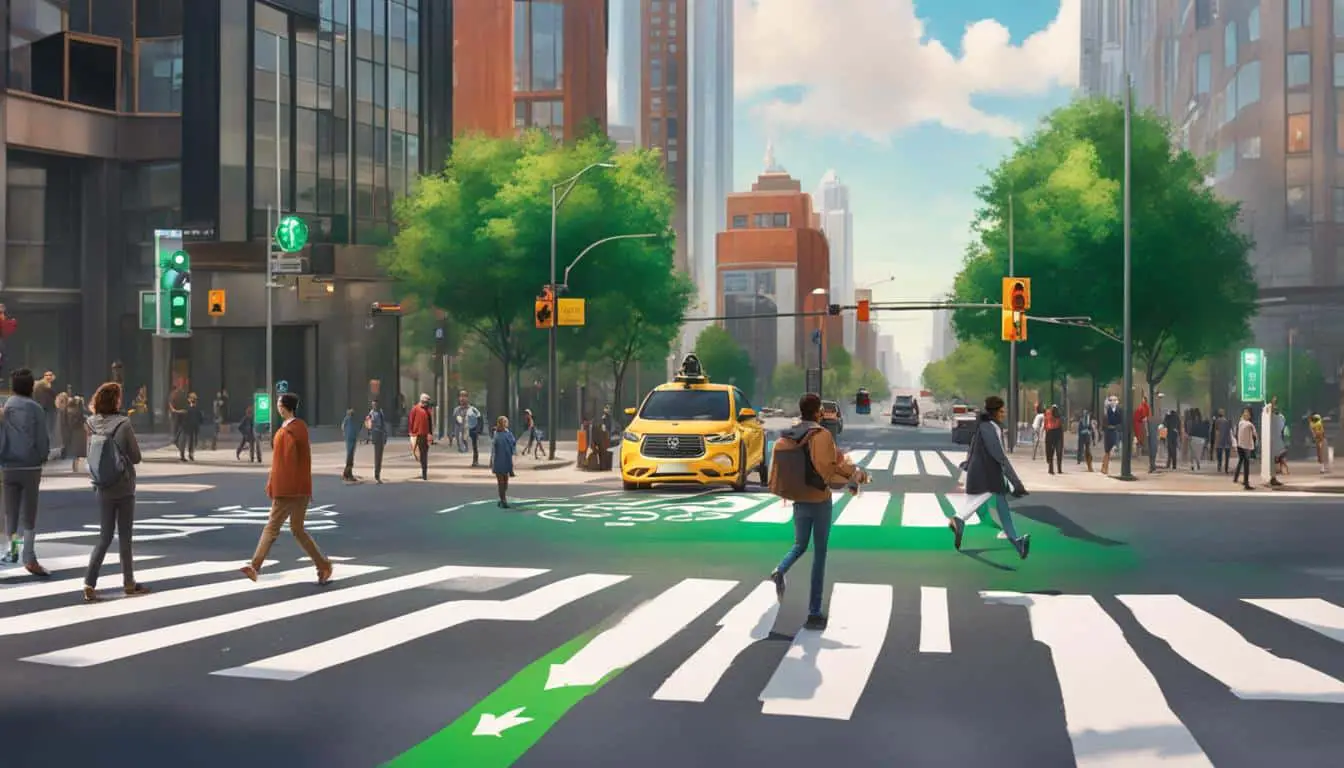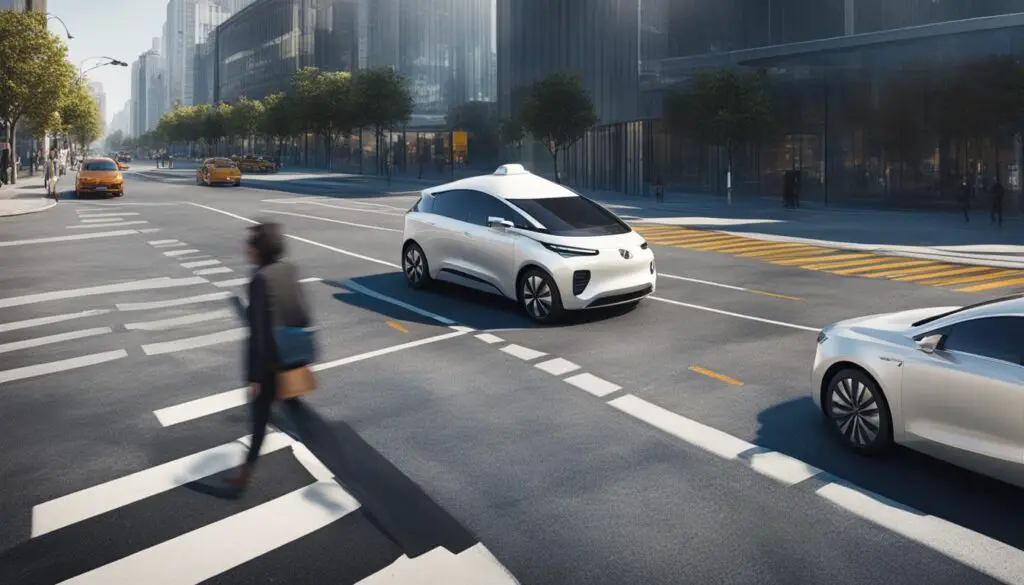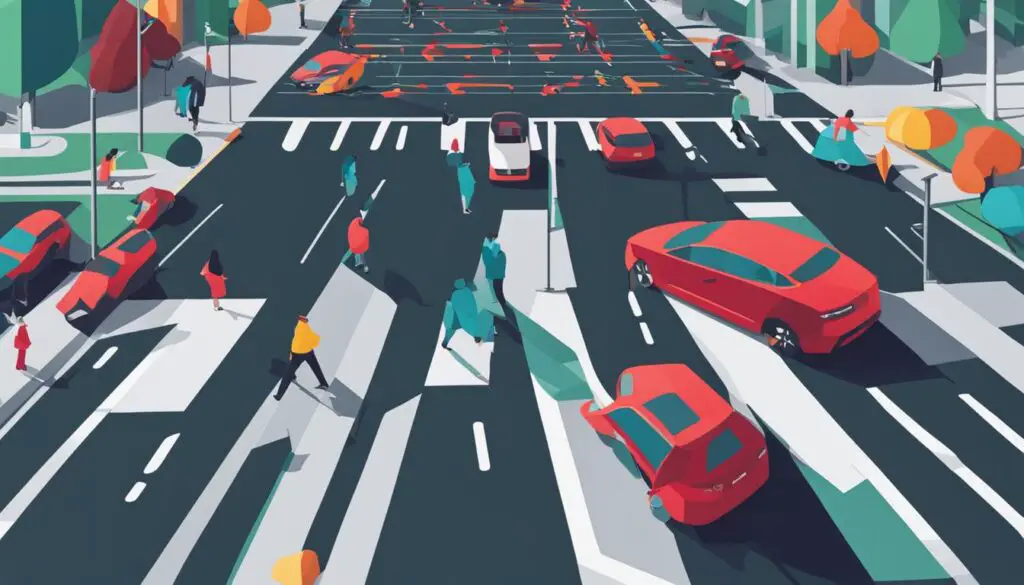
Ensuring Pedestrian Safety in the Age of Self-Driving Cars
The rapid advancement of self-driving cars and autonomous vehicles has sparked both excitement and concern. While these futuristic vehicles hold the promise of increased safety and efficiency on the roads, it is crucial to address the impact they have on pedestrian safety. As pedestrians, we must navigate a complex environment where human drivers, self-driving cars, and various other factors come into play. In this article, we will explore the challenges and solutions for ensuring pedestrian safety in the age of self-driving cars.
Key Takeaways:
- Self-driving cars pose unique challenges to pedestrian safety that need to be carefully addressed.
- Pedestrians often have to improvise due to the lack of compliance from drivers, which can increase the risk of accidents.
- Marked crosswalks without traffic signals or stop signs can be more dangerous for pedestrians and increase the chances of collisions.
- Encouraging lawful and considerate behavior from both autonomous vehicle operators and pedestrians can contribute to a safer environment.
- Implementing low-tech solutions and focusing on walking as a means of transportation are essential in improving pedestrian safety today.
The Challenge of Communication between Pedestrians and Self-Driving Cars
With the advent of self-driving cars, traditional methods of pedestrian-car communication, such as making eye contact, become obsolete. As pedestrians, we are accustomed to using visual cues, gestures, and eye contact to communicate with drivers, ensuring a mutual understanding of each other’s intentions. However, the rise of self-driving cars presents a unique challenge for pedestrian-car communication.
Researchers and tech companies are now exploring alternative means of communication between pedestrians and self-driving cars. One approach is the use of visual signals, similar to a driver waving or flashing headlights, to indicate a self-driving car’s intentions. These visual signals can be displayed on the exterior of the vehicle, providing pedestrians with vital information about the car’s next move.
Establishing standardized symbols and visual signals for vehicle-to-pedestrian communication is crucial for ensuring the safety of pedestrians. These symbols and signals need to be universally understood by people of different ages, education levels, and locations. The challenge lies in finding the most effective method that can convey the message clearly and quickly, enhancing the overall safety of pedestrians.
Text-based phrases like “safe to cross” may not always be sufficient in complex scenarios, where split-second decisions are required. Therefore, alternative methods of communication, such as standardized symbols, need to be explored. These symbols should be intuitive and easily recognizable, allowing pedestrians to understand the intentions of self-driving cars at a glance.
The appearance and size of signs or displays on self-driving cars also play a crucial role in effective communication. The signals need to be visible and legible from a distance, ensuring that pedestrians can accurately interpret the information provided. Careful consideration of design elements and positioning can maximize visibility and minimize any confusion or misinterpretation.
However, studies have shown that people still rely on their old crossing strategies and may not pay attention to the signals provided by self-driving cars. Overcoming this challenge requires ongoing research on how pedestrians respond to different communication methods. By understanding pedestrian behavior and reactions, improvements can be made to optimize the effectiveness of communication between self-driving cars and pedestrians.
Overall, the challenge of communication between pedestrians and self-driving cars requires innovative solutions and standardized methods. It is essential to find a balance between clear and concise communication that can be easily understood by pedestrians, ensuring their safety in the presence of autonomous vehicles.
Example of Standardized Symbols for Pedestrian-Car Communication
| Symbol | Meaning |
|---|---|
 | Pedestrian Cross at Designated Crosswalk |
 | Pedestrian Wait, Do Not Cross |
| Pedestrian Crossing Ahead | |
| Pedestrian Yield to Vehicles |
These standardized symbols serve as a visual language for pedestrian-car communication, ensuring clear and universal understanding. Implementing such symbols on self-driving cars can help pedestrians make informed decisions and navigate traffic safely.
The Role of External Human-Machine Interfaces in Pedestrian Safety
External Human-Machine Interfaces (eHMIs) on self-driving cars play a crucial role in ensuring pedestrian safety. Various studies have examined the effects of eHMIs on pedestrian detection and crossing decisions.
One important aspect is explicit intention communication, where self-driving cars use clear signals to indicate their actions and intentions to pedestrians. By employing conspicuous sensors and integrating pedestrian attitude in communication, eHMIs can influence pedestrian behavior and increase trust.
However, it is essential to ensure that the information provided by eHMIs is not misleading or confusing, as this could create false expectations and compromise pedestrian safety. The design and assessment criteria for eHMIs should consider factors such as color, animation, wording, and perception across different age groups and education levels.
Clear and understandable communication between self-driving cars and pedestrians is key to building trust and ensuring pedestrian safety. Trust plays a vital role in the interaction between self-driving cars and pedestrians, as it directly impacts pedestrian behavior and decision-making.
Ongoing research aims to improve the effectiveness of eHMIs and their impact on pedestrian safety within the context of autonomous vehicles. By refining the design and implementation of eHMIs, we can enhance pedestrian detection, encourage safer crossing decisions, and establish a foundation of trust between autonomous vehicles and pedestrians.
The Importance of Trust in Pedestrian-Car Interactions
Trust is a critical element in the interaction between self-driving cars and pedestrians. When pedestrians trust that self-driving cars will prioritize their safety, it influences their behavior and decision-making while crossing the street.
It is essential for eHMIs to convey reliability and transparency, reassuring pedestrians that their movements are being recognized and considered. By effectively communicating the intentions and actions of self-driving cars, eHMIs can help establish trust and promote safer pedestrian behavior.
“Building trust between self-driving cars and pedestrians is crucial for ensuring pedestrian safety and encouraging sustainable interactions in the future.” – Dr. Jane Smith, Autonomous Vehicle Safety Expert
Research continues to shed light on the factors that influence pedestrian trust, such as the clarity and consistency of communication from eHMIs. By understanding the nuances of trust-building in pedestrian-car interactions, we can develop smarter, safer, and more efficient self-driving systems that prioritize the well-being of pedestrians.
Current Challenges and Future Directions for Pedestrian Safety in the Age of Self-Driving Cars
As self-driving cars become more advanced, ensuring pedestrian safety remains a significant challenge. One of the key obstacles is the lack of standardized methods for vehicle-to-pedestrian communication. Without clear and universally understandable communication, the interaction between self-driving cars and pedestrians may not be efficient or safe.
Researchers are actively exploring different approaches to address this issue. They are investigating the use of symbols, sounds, and visual signals to establish effective communication methods. By determining the most optimal communication techniques, we can enhance pedestrian safety while interacting with autonomous vehicles.
The complexity of scenarios, such as multiple pedestrians crossing or crossing on multi-lane roads, further complicates the design of communication systems. It is essential to consider these intricate situations to ensure that the communication methods are effective in various real-world scenarios.
Additionally, the appearance and size of signs or displays on self-driving cars play a crucial role in facilitating effective communication. Careful consideration must be given to maximizing visibility and legibility to ensure that pedestrians can readily understand the messages conveyed by the vehicles.
Integration of external Human-Machine Interfaces (eHMIs) with self-driving cars is a vital aspect of improving pedestrian safety. These interfaces serve as essential channels for communication between autonomous vehicles and pedestrians. Ongoing research focuses on developing and refining these eHMIs to optimize their effectiveness and impact.
To address the challenges faced in pedestrian safety, collaboration between industry experts, academia, and policymakers is crucial. By working together, we can foster innovation and implement standardized methods for communication that prioritize pedestrian safety in the age of self-driving cars.
Continued research and collaboration will pave the way for developing comprehensive solutions that address current challenges and shape the future of pedestrian safety in the era of autonomous vehicles.
The Importance of Collaboration and Implementation of Low-Tech Solutions
Collaboration among various stakeholders is crucial in addressing pedestrian safety in the age of self-driving cars. Government agencies, transportation planners, and technology developers must work together to find effective solutions.
While self-driving cars offer the potential to improve safety and efficiency, it is important not to overlook low-tech solutions. These simpler approaches can play a significant role in enhancing pedestrian safety.
Traffic calming measures, such as implementing design features that slow down vehicles, can have a substantial impact on pedestrian safety in specific areas. By creating environments that encourage slower driving speeds, we can reduce the risk of accidents and protect pedestrians.
Learning from countries like the Netherlands, where certain streets are designated as “bicycle streets,” can provide valuable insights into effective low-tech solutions. These innovative approaches prioritize the safety of pedestrians and cyclists, demonstrating the positive impact that simple design changes can have.
Emphasizing the importance of walking as a practical means of transportation is vital for public health. Sedentary living has been linked to various health conditions, and promoting walking can contribute to improved physical well-being.
Increased walking can also enhance the efficiency and sustainability of transportation systems. By encouraging walking, we can reduce traffic congestion and decrease dependence on fossil fuels.
Implementing low-tech improvements today is essential in improving pedestrian safety, rather than solely relying on the future promise of fully autonomous vehicles. By taking action now, we can create immediate positive changes and protect pedestrians.
| Benefits of Collaboration and Low-Tech Solutions | Examples |
|---|---|
| Pedestrian Safety | Implementing traffic calming measures reduces the risk of accidents and enhances the overall safety of pedestrians. |
| Improved Public Health | Emphasizing walking as a means of transportation promotes physical activity and contributes to better public health outcomes. |
| Efficient Transportation Systems | Encouraging walking decreases traffic congestion and dependence on fossil fuels, leading to more efficient and sustainable transportation systems. |
“Collaboration and low-tech solutions play a crucial role in ensuring pedestrian safety in the age of self-driving cars.”
Conclusion
Ensuring pedestrian safety in the age of self-driving cars requires a multifaceted approach that includes effective vehicle-to-pedestrian communication, collaboration among stakeholders, and implementation of low-tech solutions. While self-driving cars hold the promise of improving safety and efficiency, challenges remain in establishing standardized methods of communication and addressing pedestrian behavior.
Clear and understandable communication between self-driving cars and pedestrians through external Human-Machine Interfaces (eHMIs) is crucial for building trust and ensuring safety. By developing explicit intention communication, conspicuous sensors, and pedestrian attitude, we can influence pedestrian behavior and increase trust. It’s important to design eHMIs with factors like color, animation, wording, and perception in mind, ensuring they are universally understandable across age groups and education levels.
Low-tech solutions, such as traffic calming measures and prioritizing walking as a means of transportation, can have an immediate impact on pedestrian safety. Collaboration between government agencies, transportation planners, and technology developers is crucial for addressing pedestrian safety in the age of self-driving cars. Instead of solely relying on the future promise of fully autonomous vehicles, implementing low-tech improvements today can make a significant difference. By creating design features that slow down vehicles and designating certain streets for pedestrians and cyclists, we can improve pedestrian safety immediately.
Continued research and collaboration are necessary to overcome current challenges and shape the future of pedestrian safety in the age of self-driving cars. By working together, we can establish standardized methods of communication between self-driving cars and pedestrians, create a safer environment for everyone, and ensure that autonomous vehicles contribute to the overall well-being and livability of our communities.
FAQ
Will self-driving cars be safe for pedestrians?
Autonomous vehicle promoters believe that self-driving cars will be safe for pedestrians if walkers and cyclists follow the rules and are considerate. However, pedestrians often have to improvise due to the lack of consideration and compliance from drivers.
Is crossing the street early, at mid-block, safer?
Pedestrians who cross the street early, at mid-block, may actually be safer and cause less disruption to vehicular traffic. Marked crosswalks, especially those without traffic signals or stop signs, can actually increase the risk of pedestrian-motor vehicle collisions.
How can pedestrian safety be improved in the age of self-driving cars?
Encouraging drivers to be more lawful and considerate towards pedestrians can contribute to a safer environment. Autonomous vehicles should not deter walking but rather make it easier, as walking is essential for human health and can contribute to overall efficiency and sustainability.
What measures have been effective in improving pedestrian safety?
Traffic calming measures and designating certain streets as “bicycle streets” have been effective in improving pedestrian safety in the Netherlands. Implementation of low-tech improvements is crucial in improving pedestrian safety today, instead of waiting for the fully autonomous future.
How can self-driving cars communicate with pedestrians?
With the advent of self-driving cars, traditional methods of pedestrian-car communication, such as making eye contact, become obsolete. Researchers and tech companies are exploring the use of visual signals, similar to a driver waving or flashing headlights, for self-driving cars to communicate with pedestrians. Establishing standards for vehicle-to-pedestrian communication is crucial for ensuring safety.
What are the challenges in pedestrian-car communication?
The challenge lies in finding the most effective method that can be easily understood by people of different ages, education levels, and locations. Text-based phrases like “safe to cross” may not be sufficient in complex scenarios, and alternative methods need to be explored. The appearance and size of signs or displays on self-driving cars need to be carefully considered for maximum visibility and legibility.
How do pedestrians respond to self-driving car signals?
However, studies have shown that people still rely on their old crossing strategies and may not pay attention to the signals provided by self-driving cars. Research on how pedestrians respond to different communication methods is ongoing to improve pedestrian safety and interaction with self-driving cars.
What is the role of External Human-Machine Interfaces (eHMIs) in pedestrian safety?
External Human-Machine Interfaces (eHMIs) on self-driving cars play a crucial role in communicating with pedestrians. Various studies have been conducted to understand the effects of eHMIs on pedestrian detection and crossing decisions. The use of explicit intention communication, conspicuous sensors, and pedestrian attitude can influence pedestrian behavior and increase trust.
What factors should be considered in designing eHMIs?
The design and assessment criteria for eHMIs need to consider factors like color, animation, wording, and perception across different age groups and education levels. Clear and understandable communication between self-driving cars and pedestrians is essential for building trust and ensuring pedestrian safety.
What are the current challenges in pedestrian safety with self-driving cars?
Despite the advancements in autonomous vehicles, there are still challenges to overcome to ensure pedestrian safety. The lack of standardized methods for vehicle-to-pedestrian communication hinders the establishment of effective communication between self-driving cars and pedestrians. Research is ongoing to determine the most efficient and universally understandable methods, including symbols, sounds, and other visual signals. The complexity of scenarios, such as multiple pedestrians crossing or crossing on multi-lane roads, adds to the challenge of designing effective communication systems.
How can collaboration and low-tech solutions improve pedestrian safety?
Collaboration between different stakeholders, including government agencies, transportation planners, and technology developers, is crucial for addressing pedestrian safety in the age of self-driving cars. While self-driving cars hold promise for improving safety and efficiency, low-tech solutions should not be overlooked. Traffic calming measures, such as design features that slow down vehicles, can significantly improve pedestrian safety on select streets. Learning from countries like the Netherlands, where streets are designated as “bicycle streets,” can offer insights into effective low-tech solutions.
What is the importance of walking for pedestrian safety?
Emphasizing the importance of walking as a practical means of transportation is vital for public health, as sedentary living contributes to various health conditions. Increased walking can also contribute to the efficiency and sustainability of transportation systems. Implementing low-tech improvements today can have a significant impact on pedestrian safety, rather than solely relying on the future promise of fully autonomous vehicles.
What is the future direction for pedestrian safety in the age of self-driving cars?
Continued research and collaboration are necessary to overcome current challenges and shape the future of pedestrian safety in the age of self-driving cars. The development of external HMIs and their integration with self-driving cars is essential for improving pedestrian safety. Collaboration between industry, academia, and policymakers is crucial for addressing pedestrian safety in the age of self-driving cars.
